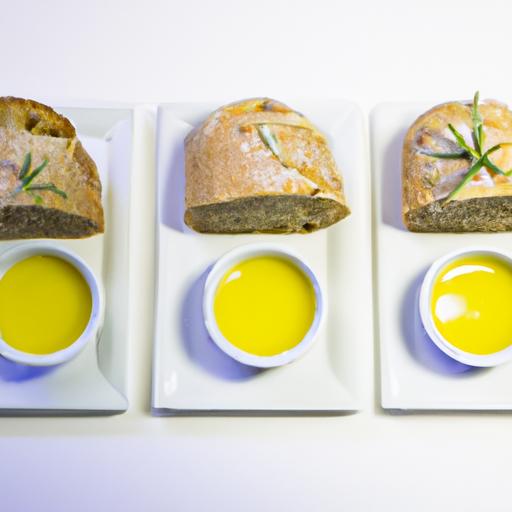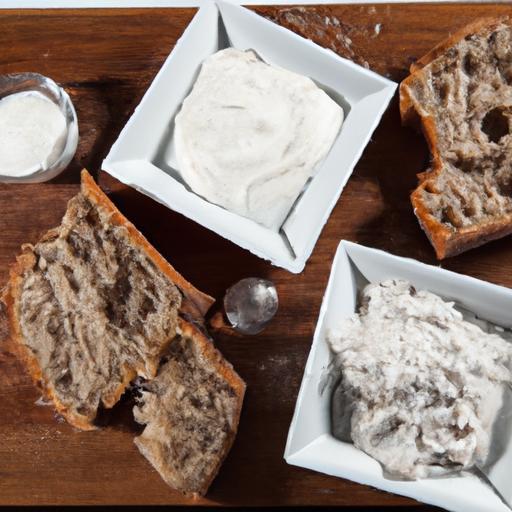In the world of artisan bread, every loaf tells a story-each crumb, crust, and aroma a testament to time-honored traditions and masterful techniques. At the heart of this craft lies a well-kept secret, a humble yet powerful ally that transforms simple ingredients into extraordinary creations: biga. This ancient Italian starter is the silent architect behind the perfect artisan bread, infusing dough with depth, flavor, and an irresistible texture. In this article, we dive deep into the world of biga, unveiling its secrets and exploring how this magical starter breathes life into every bite, elevating baking from mere recipe-following to true culinary artistry.
Biga Unveiled: The Secret Starter for Perfect Artisan Bread
Biga is a traditional Italian pre-ferment that transforms simple dough into deeply flavorful artisan bread with an unparalleled texture and aroma. Originating from Italy’s rich baking heritage, biga captures the essence of slow fermentation, allowing natural yeasts and enzymes to develop complex, nutty, and slightly tangy notes. As someone passionate about crafting breads that tell a story with every bite, mastering biga has been a game-changer in my kitchen, revealing layers of taste that instant yeast doughs simply can’t match.
Prep and Cook Time
- Preparation time: 10 minutes
- Fermentation time: 12-16 hours (overnight)
- Final dough preparation & baking: 2-3 hours
Yield
- Makes enough pre-ferment for 2 artisan loaves (approx. 1.5 kg total dough weight)
Difficulty Level
- Medium – requires some patience and attention to timing but accessible for dedicated home bakers
Ingredients
- 1 cup (120g) bread flour, preferably unbleached and high protein
- ½ cup (120ml) lukewarm water (about 75°F/24°C)
- ¼ teaspoon active dry yeast
Instructions
- Combine the Ingredients: In a medium mixing bowl, whisk the bread flour and active dry yeast together to ensure even yeast distribution.
- Add Water Slowly: Gradually pour in the lukewarm water while stirring with a wooden spoon or dough whisk to form a shaggy, stiff dough.
- Knead Lightly: Turn the dough onto a lightly floured surface and knead gently for 2-3 minutes-this is just to bring it together, not develop gluten fully.
- Initial Fermentation: Place the dough into a lightly oiled bowl, cover it tightly with plastic wrap or a damp towel, and set it to ferment at room temperature (about 68-72°F/20-22°C) for 12 to 16 hours.
- Check for Readiness: After the fermentation, your biga should be bubbly, have expanded in volume by roughly 50%, and emit a pleasantly yeasty, slightly sour aroma.
- Incorporate into Final Dough: Use your biga as the starting point for your artisan bread dough, replacing a portion of the flour and water from your overall recipe. Mix, knead, and shape according to your bread formula.
- Final Proof and Bake: Allow the dough with incorporated biga to proof fully before baking in a preheated oven with steam for a crisp, golden crust and open crumb.
Tips for Success
- Temperature Control: Fermentation temperature is key-too warm speeds up biga and can develop off-flavors; too cold slows yeast activity. Aim for a steady room temp.
- Hydration Level: Traditional biga is drier (lower hydration) than other pre-ferments like poolish, which contributes to its crumb texture-don’t add too much water.
- Yeast Amount: Using just a pinch of yeast allows natural fermentation to take center stage. Avoid shortcuts by adding more yeast-it alters flavor and texture.
- Make Ahead: Prepare your biga the night before and refrigerate if needed. Before using, bring it to room temperature for best results.
- Troubleshooting: If your biga smells sour or alcoholic, fermentation time may have been too long or temperature too warm. Reduce these to keep a balanced profile.
Serving Suggestions
Once your artisan bread crafted with biga comes out of the oven, slice into thick pieces to showcase the open crumb and caramelized crust. Drizzle with extra virgin olive oil and sprinkle flaky sea salt or pair with creamy ricotta and fresh herbs for a rustic Italian experience. This bread shines next to hearty soups, charcuterie boards, or simply enjoyed warm with butter and honey.
| Nutritional Information (Per Serving, 1/8 Loaf) | Calories | Protein | Carbohydrates | Fat |
|---|---|---|---|---|
| Artisan Bread with Biga | 180 | 6g | 36g | 1g |

For a deep dive into other traditional Italian starters, be sure to explore our comparison of poolish and biga. To understand the science behind fermentation further, visit the comprehensive resource on sourdough and pre-ferments from BreadScience.com.
Q&A
Q&A: Biga Unveiled – The Secret Starter for Perfect Artisan Bread
Q1: What exactly is biga, and why is it considered a “secret starter”?
A1: Biga is a traditional Italian pre-ferment-a mixture of flour, water, and a pinch of yeast left to ferment slowly. It’s called a “secret starter” because it quietly works behind the scenes, awakening complex flavors and improving the texture of artisan bread without the need for extra additives. It’s the magic that transforms ordinary dough into something extraordinary.
Q2: How does biga differ from other pre-ferments like poolish or sourdough?
A2: While poolish is a wetter, more batter-like ferment, and sourdough relies on wild yeast and bacteria, biga boasts a drier consistency and uses a small, controlled amount of commercial yeast. This balance strikes a perfect harmony-providing a light, airy crumb with a subtle nutty taste that’s unique to biga.
Q3: Why should aspiring bakers bother making biga? Isn’t it easier to just add yeast straight to the dough?
A3: Adding yeast directly yields bread-but it often skips the depth of flavor and ideal crumb that biga cultivates. Biga extends fermentation time, allowing enzymes to break down starches, which enhances flavor complexity and creates an artisan loaf with a beautiful crust and chewy interior. It’s like unlocking a secret level in bread baking!
Q4: What’s the typical process for making and using biga?
A4: Simple and elegant: mix flour, water, and a small pinch of yeast until you get a firm, shaggy dough. Let it rest at room temperature for 12 to 16 hours. During this slow fermentation, gluten develops and flavor intensifies. When you fold biga into your main dough, it imparts incredible strength and taste, setting the stage for perfection.
Q5: Can I customize biga to suit different types of bread?
A5: Absolutely! While classic biga calls for bread flour and water, adventurous bakers can adjust hydration, experiment with whole grain flours, or tweak fermentation times. Each variable subtly changes the flavor and texture, giving you a personalized artisan experience every time.
Q6: What are the most noticeable characteristics of a bread loaf made with biga?
A6: Expect a deeply golden, crackly crust that snaps delightfully when you slice into it. The crumb is open yet sturdy, with irregular bubbles that showcase strong gluten development. The flavor? Rich, slightly nutty with a hint of sweetness-nature’s way of turning simple ingredients into edible art.
Q7: Where can I find inspiration for recipes using biga?
A7: Italian bread traditions offer a treasure trove-think focaccia alla genovese, ciabatta, and rustic country loaves. Countless bakers online share their biga experiments, blending heritage with innovation. So, don your apron and let biga guide you through a flavorful journey to perfect artisan bread!
Discovering biga is like finding the maestro behind the symphony of artisan bread-a humble mix with extraordinary powers. Are you ready to let biga unlock your baking potential?
In Summary
As the aroma of freshly baked artisan bread fills your kitchen, remember that the magic often begins long before the dough hits the oven-hidden within the subtle depths of biga. This traditional Italian starter, with its quiet ferment and gentle nurture, transforms simple ingredients into bread with soul, character, and that irresistible crust. By embracing the secret of biga, you don’t just bake bread; you embark on a timeless journey, crafting loaves that tell a story of patience, passion, and perfection. So next time you crave that quintessential artisanal bite, let biga be your trusted companion-unlocking the secret to bread that’s not just made, but truly mastered.


